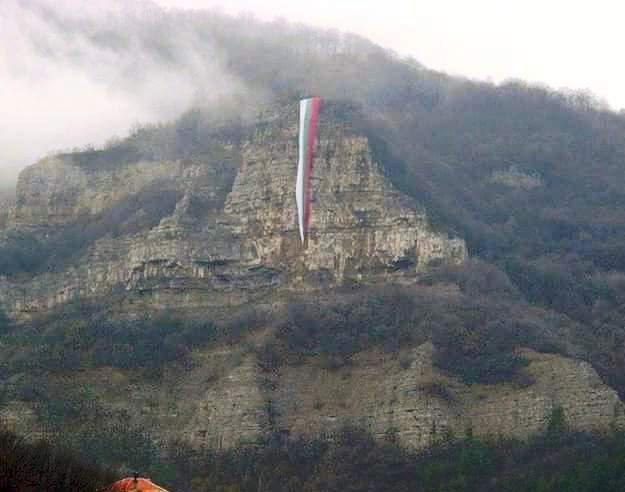

The early medieval Bulgarian fortress near Skala village was located on the eastern terrace of the dry valley Kanagiol, Dristra in the past.
The fortress guarded the ancient road that connected the ancient city Martsianapol with Durastorium and in the Middle Ages, during the First Bulgarian Kingdom Drustur linked the current city Silistra with the capitals Pliska and Preslav.
The fortress is located on solid rock. To the south there are the lines of rocks with a height of 15 m which close access to gradiste. It has an incorrect shape extended north – south, with a length of 96 m., width 20 m and an area of 1.8 acres. It occupies the uneven cliff-top terrace and the south of it. The stone lines with a height of 12 m separates the fort in 2 parts, out of which the North one can defend itself. Probably the two parts of the city were connected by wooden stairs. The city walls are visible in the western, northern and in the eastern part. The city wall is built of graven stone, cemented with white and red mortar. The city has excellent visibility to the east, west and south. The northern wall was the most vulnerable and accessible, so 7 m in front of it there is a ditch. The ditch is 30 meters long 2 m deep and 3 m wide. and a width of 3 meters. The main gate of gradiste is on the north wall until it gets away from the area “Yurta” where there was a settlement. The fortress was approached from the west. At the top of the fortress there was a building on the square construction, probably a citadel. The pottery discovered of early Byzantine origin and medieval Bulgaria (11th – 14th century). The fortress defended and guarded the so-called “Peritski Road ” and village population from “Yurta” area.
Archaeological studies were published in the book “Skala – X-XI century fortress” edition of the Academy of Sciences of Bulgarian.
